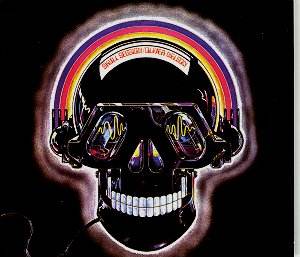Butterfly Herbie Hancock (Future to future)
Important Update:
Be sure to check out SuperMedia Downloader Suite. You can mass download YouTube Videos, mass download Myspace Music, mass download Mp3s, and mass download images!Click Here To Check Out SuperMedia Downloader Suite.
Herbert Jeffrey Hancock (born April 12, 1940 in Chicago, Illinois) is an Academy Award and multiple Grammy Award-winning jazz pianist and composer. Hancock is one of jazz music's most important and influential pianists and composers. He embraced elements of rock, funk, and soul while adopting freer stylistic elements from jazz.
As part of Miles Davis's "second great quintet", Hancock helped redefine the role of a jazz rhythm section, and was one of the primary architects of the "post-bop" sound. Later, he was one of the first jazz musicians to embrace synthesizers and funk. Yet for all his restless experimentalism, Hancock's music is often melodic and accessible; he has had many songs "cross over" and achieve success among pop audiences.
Hancock's best-known solo works include "Cantaloupe Island", "Watermelon Man" (later performed by dozens of musicians, including bandleader Mongo Santamaria), "Maiden Voyage", "Chameleon", and the single "Rockit."
Early life and career
Like many jazz pianists, Hancock started with a classical music education; Hancock studied from age seven. His talent was recognized early, and he played the first movement of Mozart's Piano Concerto No. 5 in D Major at a young people's concert with the Chicago Symphony at age eleven.[1]
Through his teens, Hancock never had a jazz teacher. Instead, around high school age, Hancock grew to like jazz after hearing some Oscar Peterson and George Shearing recordings, which he transcribed on his own time, and which developed his ear and sense of harmony. Hancock also listened to other pianists, including Don Goldberg (also a prodigy and a Hyde Park High School classmate), McCoy Tyner, Wynton Kelly and Bill Evans, and studied recordings by Miles Davis, John Coltrane and Lee Morgan.
Hancock began his studies as an engineering major at Grinnell College but switched to music after two years. He left Grinnell one course short of graduation in 1961, moved to Chicago and began working with Donald Byrd and Coleman Hawkins, during which period he also took courses at Roosevelt University. (Grinnell awarded Hancock an honorary Doctor of Fine Arts degree in 1972).[1] The pianist quickly earned a reputation, and played subsequent sessions with Oliver Nelson and Phil Woods. He recorded his first solo album Takin' Off for Blue Note Records in 1962. "Watermelon Man" (from Takin' Off) was to provide Mongo Santamaria with a hit single, but crucially Takin' Off was to catch the attention of Miles Davis, who was at that time assembling a new band. Hancock was introduced to Davis by the young drummer Tony Williams, a member of the new band.
Miles Davis quintet and Blue Note
Hancock received considerable attention when, in May 1963, [2] he joined Miles Davis's "second great quintet." This new band was essentially Miles Davis surrounded by fresh, new talent. Davis personally sought out Hancock, whom he saw as one of the most promising talents in jazz. The rhythm section Davis organized was young but effective, comprising bassist Ron Carter, seventeen year old drummer Tony Williams, and Hancock on piano. After George Coleman and Sam Rivers each taking turns at the saxophone spot, the quintet would gel with Wayne Shorter on tenor saxophone. This quintet is often regarded as one of the finest jazz ensembles, and the rhythm section has been especially praised for its innovation and flexibility.
The second great quintet was where Hancock found his own unique voice as a master of jazz piano. Not only did he find new ways to use common chords, he also popularized chords then rarely used in jazz. Hancock also developed a unique taste for "orchestral" accompaniment - using fourths and Debussy-like harmonies, with stark contrasts then unheard of in jazz.
With Williams and Carter he would weave a labyrinth of rhythmic intricacy on, around and over existing melodic and chordal schemes. In the later half of the sixties their approach would be so sophisticated and unorthodox that conventional chord changes would hardly be discernible, hence their improvisational concept would somewhat inaccurately be called "Time, No Changes."
Maiden Voyage (1965)While in the Davis band, Hancock also found time to record dozens of sessions for the Blue Note label, both under his own name and as a sideman with other musicians such as Wayne Shorter, Tony Williams, Grant Green, Bobby Hutcherson, Sam Rivers, Donald Byrd, Kenny Dorham, Hank Mobley, Lee Morgan and Freddie Hubbard.
Click Here To Download "Butterfly Herbie Hancock (Future to future)" Now!
Butterfly Herbie Hancock (Future to future) Video
Oliver Nelson Pictures (Click For Larger Image)




If you would like to download Butterfly Herbie Hancock (Future to future) click here.
Check Out Oliver Nelson Products On Ebay:
Ebay Oliver Nelson Products:

The Blues And The Abstract Truth - Nelson, Oliver (CD)

OLIVER NELSON**BLUES & THE ABSTRACT TRUTH (DIGIPAK)**CD

Oliver NELSON Jazz Compositions Jazz Play Along Book CD
Also, Interested In "Butterfly Herbie Hancock (Future to future)"? You May Be Interested In Some of The Oliver Nelson Products Below:
If you like Butterfly Herbie Hancock (Future to future) then you might like:
You Can Also Check Out Other Articles I've Posted Below:
Benches Stools
Boys Attire
